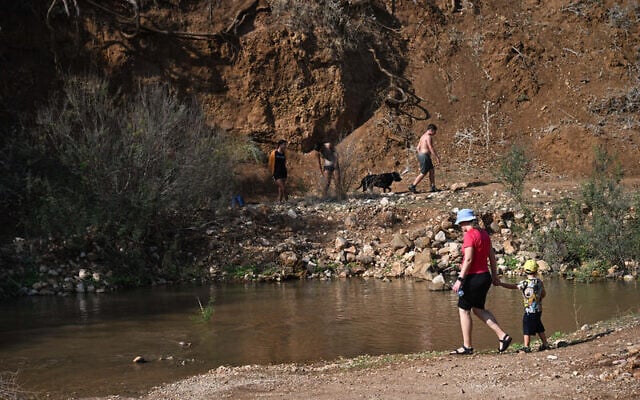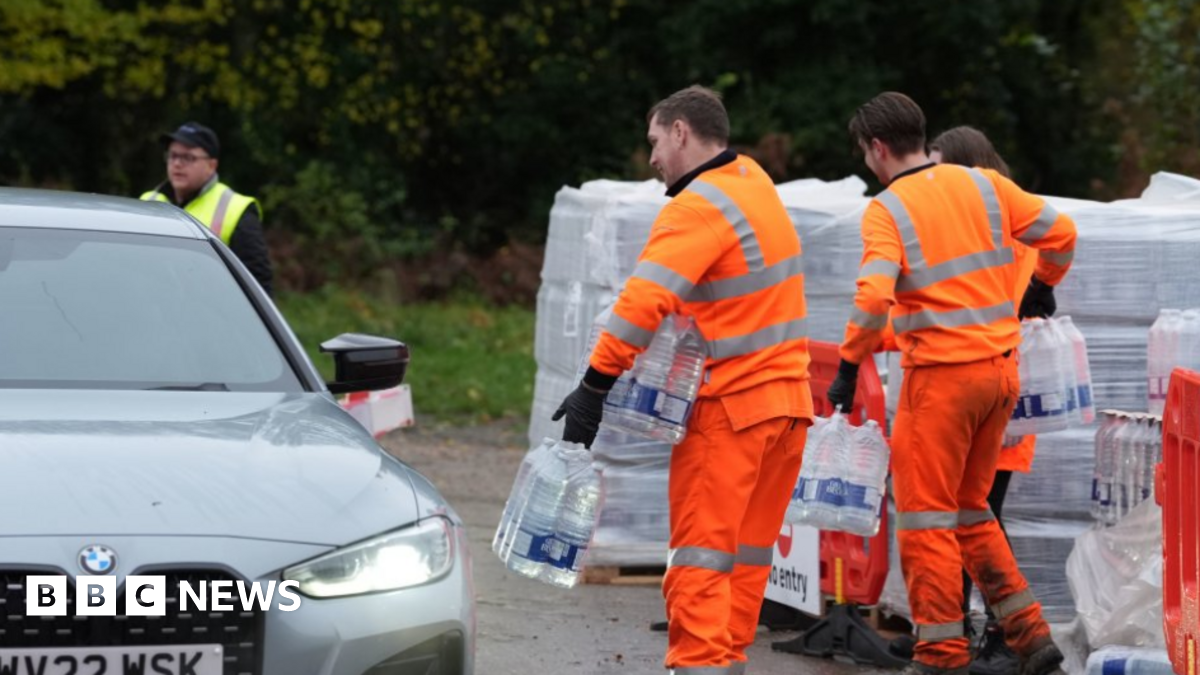Drinking water in Tehran could run dry in two weeks, Iranian official says – Al Jazeera

Report on Tehran’s Critical Water Scarcity and Implications for Sustainable Development Goals
A report from state media indicates that Tehran, the capital of Iran, is facing an unprecedented water crisis. A historic drought has severely depleted the reservoirs supplying the city, posing a direct threat to the well-being of its residents and highlighting significant challenges to achieving multiple Sustainable Development Goals (SDGs).
Immediate Crisis: Depletion of Water Reserves
Amir Kabir Dam Status
The primary source of the crisis is the condition of the Amir Kabir Dam, one of five dams that provide potable water to Tehran’s population of over 10 million. The current situation is detailed as follows:
- Current Volume: The dam holds only 14 million cubic meters of water, which is 8% of its total capacity.
- Projected Supply Duration: At current levels, the dam can only supply water to the capital for approximately two more weeks.
- Precipitation Decline: The region has experienced a “100 percent drop in precipitation,” leading to this critical shortage.
- Comparative Volume: This marks a drastic reduction from the previous year, when the dam held 86 million cubic meters of water.
Impact on Tehran’s Population
The megacity’s daily water consumption is approximately three million cubic meters. In response to the shortage, authorities have implemented water-saving measures, including cutting off supplies to several neighborhoods. This follows a summer marked by frequent outages and the declaration of public holidays to conserve water and energy amid extreme heatwaves.
Alignment with Sustainable Development Goals (SDGs)
The water crisis in Tehran directly undermines progress toward several key SDGs, demonstrating the interconnectedness of environmental stability, urban resilience, and human health.
SDG 6: Clean Water and Sanitation
The situation represents a severe failure to meet the targets of SDG 6. The inability to provide a consistent and safe water supply for over 10 million people challenges the core objective of ensuring the availability and sustainable management of water for all. The crisis underscores the consequences of unsustainable water withdrawal and the lack of integrated water resources management.
SDG 11: Sustainable Cities and Communities
Tehran’s vulnerability to this drought exposes a critical lack of resilience, a key component of SDG 11. The failure to secure basic services like water for its inhabitants makes the city less inclusive, safe, and sustainable. This event highlights the urgent need for cities to adopt and implement integrated policies for climate change adaptation and disaster risk reduction.
SDG 13: Climate Action
The historic drought is explicitly linked to the growing impact of climate change. The extreme heatwaves and unprecedented lack of rainfall are direct consequences of a changing climate, making this crisis a clear call for strengthened resilience and adaptive capacity to climate-related hazards, as outlined in SDG 13.
Broader SDG Implications
The crisis also has significant implications for other goals:
- SDG 3 (Good Health and Well-being): Water scarcity poses a direct threat to public health, increasing the risk of sanitation-related diseases.
- SDG 12 (Responsible Consumption and Production): The situation is exacerbated by factors including mismanagement and overexploitation of resources, pointing to a failure in achieving sustainable management and efficient use of natural resources.
- SDG 15 (Life on Land): Widespread drought has devastating effects on terrestrial ecosystems, further degrading the natural environment.
Contributing Factors and Official Acknowledgment
Root Causes of the Crisis
The water shortage is attributed to a combination of factors that reflect both environmental and governance challenges:
- The growing impact of climate change, manifesting as the worst drought in decades.
- Systemic mismanagement of water resources.
- Overexploitation of underground water reserves.
Government Response and Statements
The severity of the crisis has been acknowledged at the highest levels. Iranian President Masoud Pezeshkian previously warned, “The water crisis is more serious than what is being discussed today.” The government’s prior actions, such as declaring public holidays to reduce consumption, underscore the long-standing nature of the problem.
Regional Context and Conclusion
The water scarcity issue is not isolated to Iran. Neighboring Iraq is also experiencing its driest year on record, indicating a widespread regional environmental crisis. The situation in Tehran serves as a critical case study of how environmental degradation, poor resource management, and climate change converge to threaten urban stability and impede progress on the global Sustainable Development Goals.
Analysis of Sustainable Development Goals (SDGs) in the Article
1. Which SDGs are addressed or connected to the issues highlighted in the article?
- SDG 6: Clean Water and Sanitation: This is the most central SDG, as the article’s primary focus is the severe water crisis in Tehran, including the shortage of drinking water, drought, and the depletion of water reservoirs.
- SDG 11: Sustainable Cities and Communities: The article discusses the impact of the water crisis on Tehran, a megacity with over 10 million people. The water cuts, public holidays, and the potential for the main water source to run dry directly affect the city’s sustainability, safety, and resilience.
- SDG 13: Climate Action: The article explicitly mentions “the growing impact of climate change” as a contributing factor to the water scarcity, alongside mismanagement. The historic drought and heatwaves are presented as climate-related hazards impacting the region.
2. What specific targets under those SDGs can be identified based on the article’s content?
-
Under SDG 6 (Clean Water and Sanitation):
- Target 6.1: “By 2030, achieve universal and equitable access to safe and affordable drinking water for all.” The article highlights a direct threat to this target, stating that the main source of drinking water for over 10 million residents is at risk of running dry.
- Target 6.4: “By 2030, substantially increase water-use efficiency across all sectors and ensure sustainable withdrawals and supply of freshwater to address water scarcity…” The article points to a failure in meeting this target by describing a “historic drought,” “overexploitation of underground resources,” and a situation where water demand outstrips the dwindling supply, leading to a severe crisis.
- Target 6.5: “By 2030, implement integrated water resources management at all levels…” The article implies a lack of effective water resource management by citing “mismanagement” as one of the causes of the water shortages.
-
Under SDG 11 (Sustainable Cities and Communities):
- Target 11.5: “By 2030, significantly reduce the number of deaths and the number of people affected and substantially decrease the direct economic losses relative to global gross domestic product caused by disasters, including water-related disasters…” The drought is described as a water-related disaster affecting the entire population of Tehran. Measures like water cuts and declaring public holidays show how the population is directly impacted.
-
Under SDG 13 (Climate Action):
- Target 13.1: “Strengthen resilience and adaptive capacity to climate-related hazards and natural disasters in all countries.” The article describes the “worst drought in decades” and a severe “heatwave” as climate-related hazards. The city’s struggle to provide basic services like water indicates challenges in its resilience and adaptive capacity to these events.
3. Are there any indicators mentioned or implied in the article that can be used to measure progress towards the identified targets?
-
For SDG 6:
- Water Stress Levels: The article provides clear indicators of extreme water stress. For example, the Amir Kabir Dam holding “just 14 million cubic metres of water, which is eight percent of its capacity,” down from 86 million cubic metres a year prior.
- Change in Freshwater Availability: The “100 percent drop in precipitation’ in the Tehran region” is a direct indicator of a drastic change in the availability of freshwater resources.
- Population Affected by Water Scarcity: The article states that the water supply for “more than 10 million people” is at risk, directly indicating the number of people suffering from water scarcity.
-
For SDG 11:
- Population Affected by Disasters: The article implies that the entire population of Tehran is affected. Specific indicators of this impact include “supplies have reportedly been cut off to several neighbourhoods” and the declaration of “two public holidays to save water and energy.”
-
For SDG 13:
- Occurrence of Climate-Related Hazards: The article mentions the occurrence of specific hazards that can be tracked, such as the “worst drought in decades” and a “heatwave that saw temperatures rise beyond 40 Celsius (104 Fahrenheit).”
4. Table of SDGs, Targets, and Indicators
| SDGs | Targets | Indicators |
|---|---|---|
| SDG 6: Clean Water and Sanitation | 6.1: Achieve universal and equitable access to safe and affordable drinking water for all. | The drinking water supply for over 10 million people is at risk of running dry within two weeks. |
| 6.4: Substantially increase water-use efficiency and ensure sustainable withdrawals to address water scarcity. | – Amir Kabir Dam is at 8% of its capacity (14 million cubic metres). – A 100% drop in precipitation in the Tehran region. – Daily water consumption in Tehran is around 3 million cubic metres. |
|
| 6.5: Implement integrated water resources management. | Water shortages are blamed in part on “mismanagement and overexploitation of underground resources.” | |
| SDG 11: Sustainable Cities and Communities | 11.5: Significantly reduce the number of people affected by disasters, including water-related disasters. | – Water supplies cut off to several neighbourhoods. – Two public holidays were declared to save water. |
| SDG 13: Climate Action | 13.1: Strengthen resilience and adaptive capacity to climate-related hazards and natural disasters. | – Occurrence of the “worst drought in decades.” – A heatwave with temperatures exceeding 40°C in Tehran and 50°C in other areas. – The crisis is attributed to the “growing impact of climate change.” |
Source: aljazeera.com
What is Your Reaction?
 Like
0
Like
0
 Dislike
0
Dislike
0
 Love
0
Love
0
 Funny
0
Funny
0
 Angry
0
Angry
0
 Sad
0
Sad
0
 Wow
0
Wow
0




















































.jpg.webp?itok=0ZsAnae9#)



























